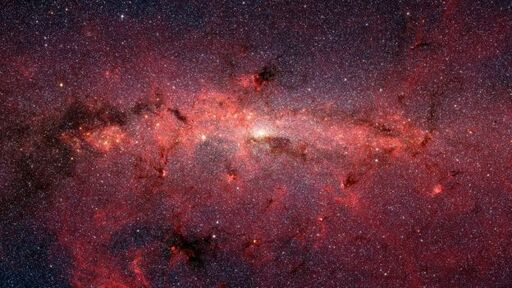It boogles my mind we live on a rock in space, in a vast galaxy, in an unending universe…and we humans act the way we do.
It’s not like we can go anywhere else.
But we could have… If we spend as much om science as we did on war, since the dawn of mankind, i’m convinced we could have :)
published : 2021 March 28 !
What if there isn’t a constant but it depends on where in the currant loaf (balloon is flawed imo) we are, being slower near the center?
Like what exactly do they expect to be at the outer edge of the universe? Feels like a flat-earth sort of a worldview…
Observations doesn’t show curvature of space. Despite this, cosmologist do not exclude the universe to be ultimately wrapped unto itself like a tree dimensional topological closed region. So, when they consider the size of the universe, they don’t mean in any way it having edges.
Or that we only see a tiny part of the actual universe.
I think the current very rough estimate is around ¼ of the universe being observable.
Fun fact: smaller and smaller part of the universe is observable. As the space is expanding, it drives the furtest reaches of observable universe away faster than the light can fly. So the area, from which the light could reach us if it flew for the time since the big bang, is smaller today than it was yesterday. It really drove home for me just how big universe is.
If it were that small we would have detected the curvature already.
Last I heard I’m pretty sure they have ruled out any size of the whole universe less than 1000 times as big as the observable universe, and I think that might be radial size, so the minimum volume would be a billion times as large as what we can theoretically potentially see.
But the measurements are also consistent with 0 curvature, which would be the value for an infinitely large whole universe.
My quick search shows numbers much closer to yours than mine. I remember mine because I was surprised it was so small. I thought I read it somewhere reasonably believable (but don’t remember where), but maybe it was some estimate not generally accepted. Thanks for correcting me.
You might have confused the full universe with the observable universe.
Right now, what we see at the “edge” of the observable universe is where it was less than 13.8 billion years away, because that light emitted back then from that spot took that time to reach us. But those things we’re seeing have since moved away, and AFAIK they are now estimated to be 47 billion light-years away (for a total size of 94 billion light-years across), which seems close to your 1/4 number.
Well, that sounds completely reasonable. I’m aware of this difference, but maybe I misunderstood what I read. Or misremembered, it’s been a while.
The flat earth analogue is assuming it has an edge. We don’t know that.






